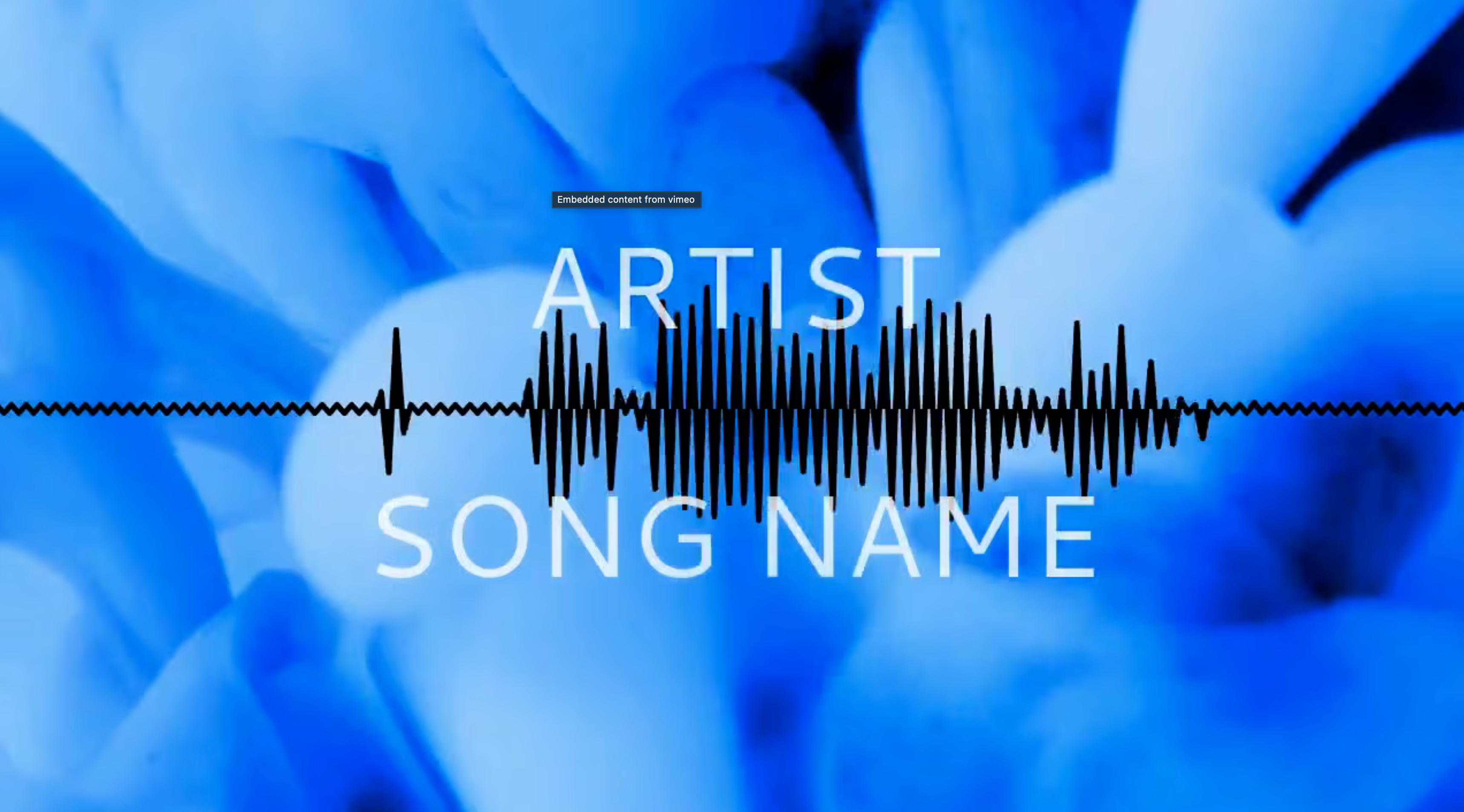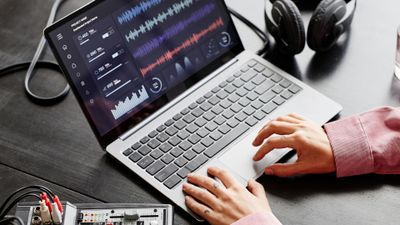A war is brewing between the old music video and the new kid on the block, visualizers. While visualizers offer a simpler and often more cost-effective way to engage fans, actual music videos provide a more developed and complex visual representation of a song.
Artists often release a visualizer first as a placeholder before potentially introducing a full-fledged music video that features a more intricate narrative or aesthetic elements. Let’s explore five reasons why these audiovisual experiences are becoming the choice of many artists.
1. Cost Efficient
A music video can be expensive, requiring professional equipment and a big team. Visualizers, on the other hand, can be made with minimal resources. Many electronic media playing software now have built-in visualization tools, so it’s easier than ever to make cool visuals for your tracks.
For artists with a limited budget, a simple lyric video or a colorful graphic visualizer can be as effective as a traditional video. Additionally, video editing software can be used to create visualizers with greater creative control over the visual elements and audio tracks. This accessibility allows more artists to make visual content for their new releases without burning a hole in their pocket.
2. Faster Production Time with Video Editing Software
Actual music video production can be a time-consuming process involving scriptwriting, location scouting, filming, and extensive video editing. Visualizers, on the other hand, can be made much faster by starting with an audio file. Whether it’s a simple visual to complement the audio or a more elaborate music visualization, the turnaround time is much shorter.
Tools can transform audio files into visually appealing video clips for social media, making it easy to create engaging content. This speed allows artists to keep up with the demands of today’s fast-paced music industry, where there’s always pressure to drop new content and keep fans engaged.
3. Versatility and Flexibility
Visualizers are very flexible tools. A music visualizer can be easily adapted to different concepts and styles, allowing artists to experiment with various visual styles without needing to reshoot or perform complex edits. This is very useful for electronic and instrumental music, where traditional narrative-driven videos might not always be the best fit.
Visualizers can also serve as a simplistic visual, intended to accompany songs without the complexity of a complete narrative, providing a straightforward representation of the music while allowing creative experimentation. From geometric shapes to abstract color flows, visualizers can be made to match the mood and genre of any track. This flexibility extends to different platforms, too – a visualizer can be easily reformatted for different social media channels, unlike a standard video.
4. More Focus on the Music
Music videos often tell a story or showcase the artist’s performance, while visualizers focus on the audio. This is very beneficial for artists who want their music to speak for itself. By using visual representation that complements rather than competes with the song, visualizers can enhance the listening experience without distracting from the track itself.
Lyric videos, a type of visualizer, serve two purposes – to show the song’s words and provide visual interest. This helps listeners connect more with the lyrics and the message of the music.
5. Made for Streaming Platforms: Lyric Videos
In the age of YouTube and music streaming services, video clips and visualizers have found their home. Many listeners now consume music through these platforms, often in the background while doing other tasks. Visualizers are the happy medium – something visually interesting for those who want to watch without demanding full attention like a narrative music video would.
And visualizers are perfect for long form listening experiences. Artists can easily string together visualizers for an entire album and create an audiovisual journey that keeps the viewer engaged for hours.
Creating Visualizers with Beatwave
For artists looking to jump into the world of music visualizers, tools like Beatwave are making the process easier than ever. Beatwave offers a user-friendly platform to create professional-quality visualizers without the need for complex video editing software or technical expertise. Users can simply upload their audio file, choose from a variety of templates, and customize the visuals to match their brand or album artwork.
The software’s intuitive interface allows for easy adjustment of colors, patterns, and effects, ensuring that the final work aligns perfectly with the artist’s vision. Whether you’re aiming for a simple lyric video or a more elaborate music visualization, Beatwave provides the tools to bring your audio to life visually. This accessibility is empowering more artists to explore different concepts in visual music content, further driving the trend of visualizers in the music industry.
Final Thoughts
For artists looking to make an impact with their new music, considering a visualizer alongside (or instead of) a traditional music video might be a good move. Visualizers serve as a compromise between basic visuals and a fully developed, complex music video, allowing artists to express their music without the demands of a full narrative.
As technology advances, we’ll see even more creative uses of music visualizers in the future, and the lines between audio and visual art forms will get even more blurred.
Ultimately, it’s up to the artist to decide on a visualizer or music video (or both), but one thing is for sure: visualizers are here, and they’re changing the music promotion game.




